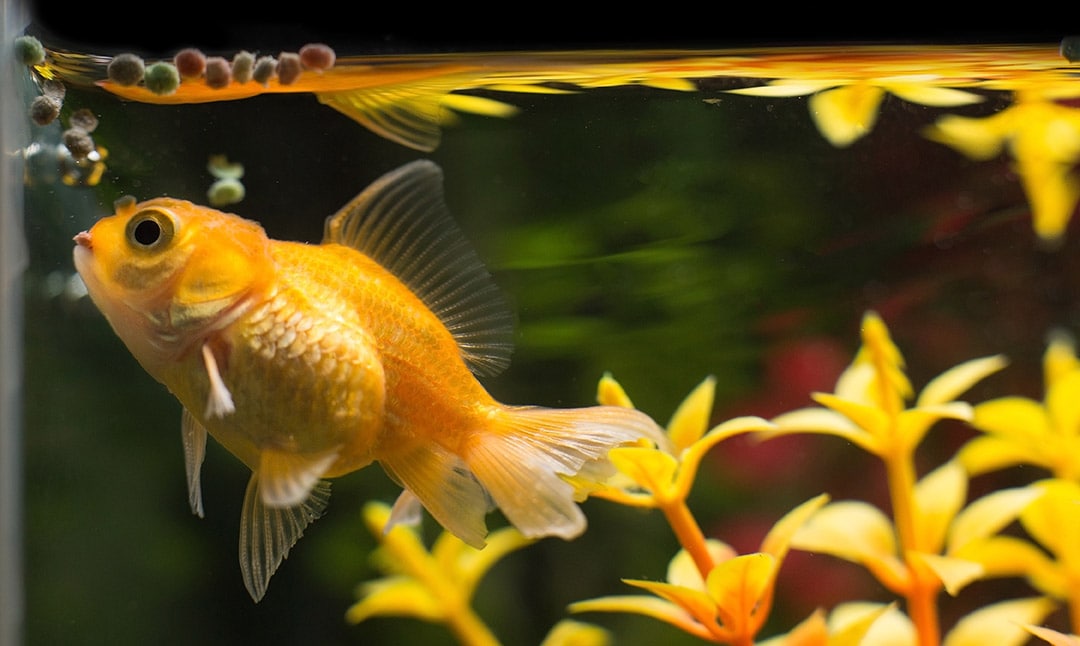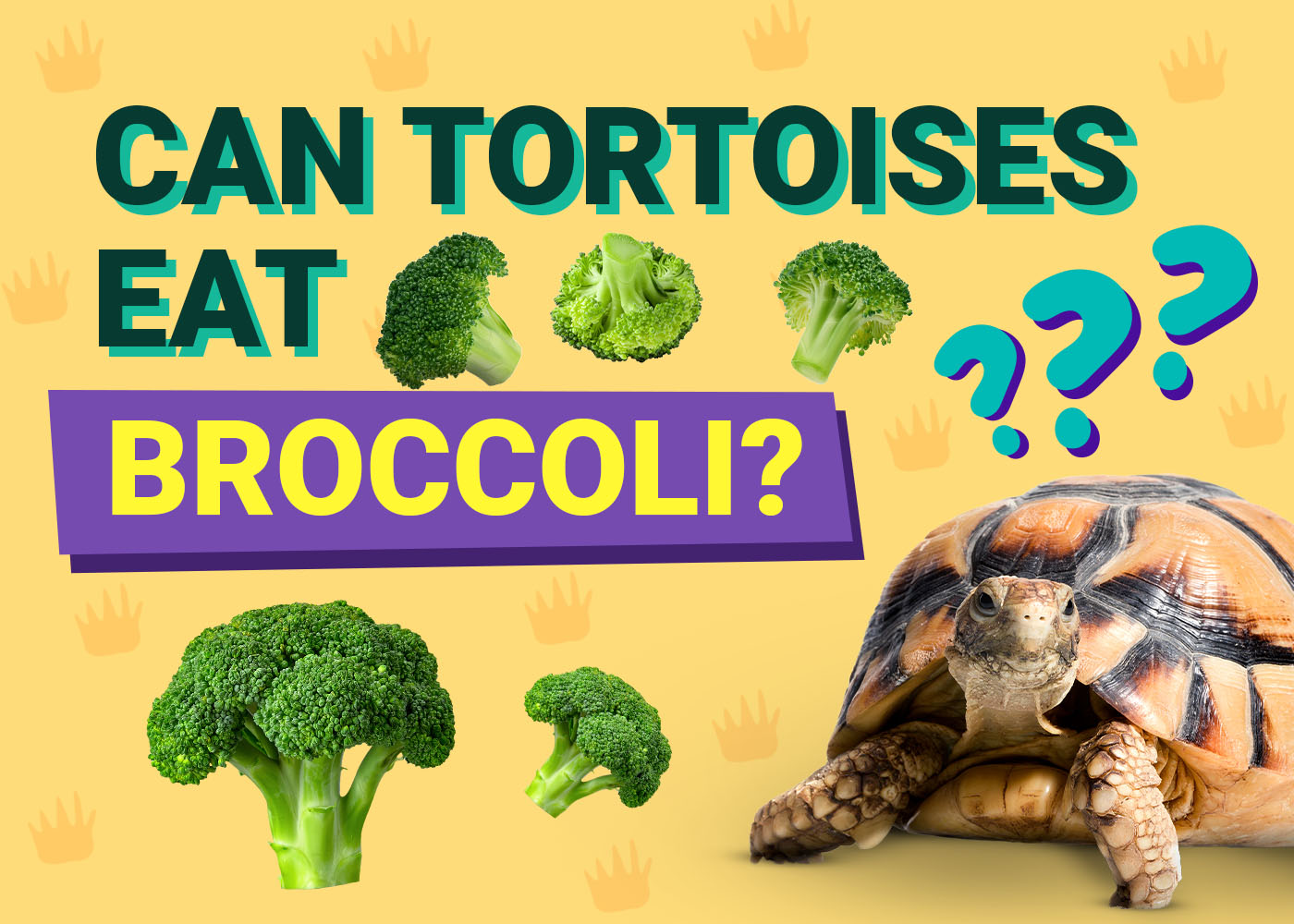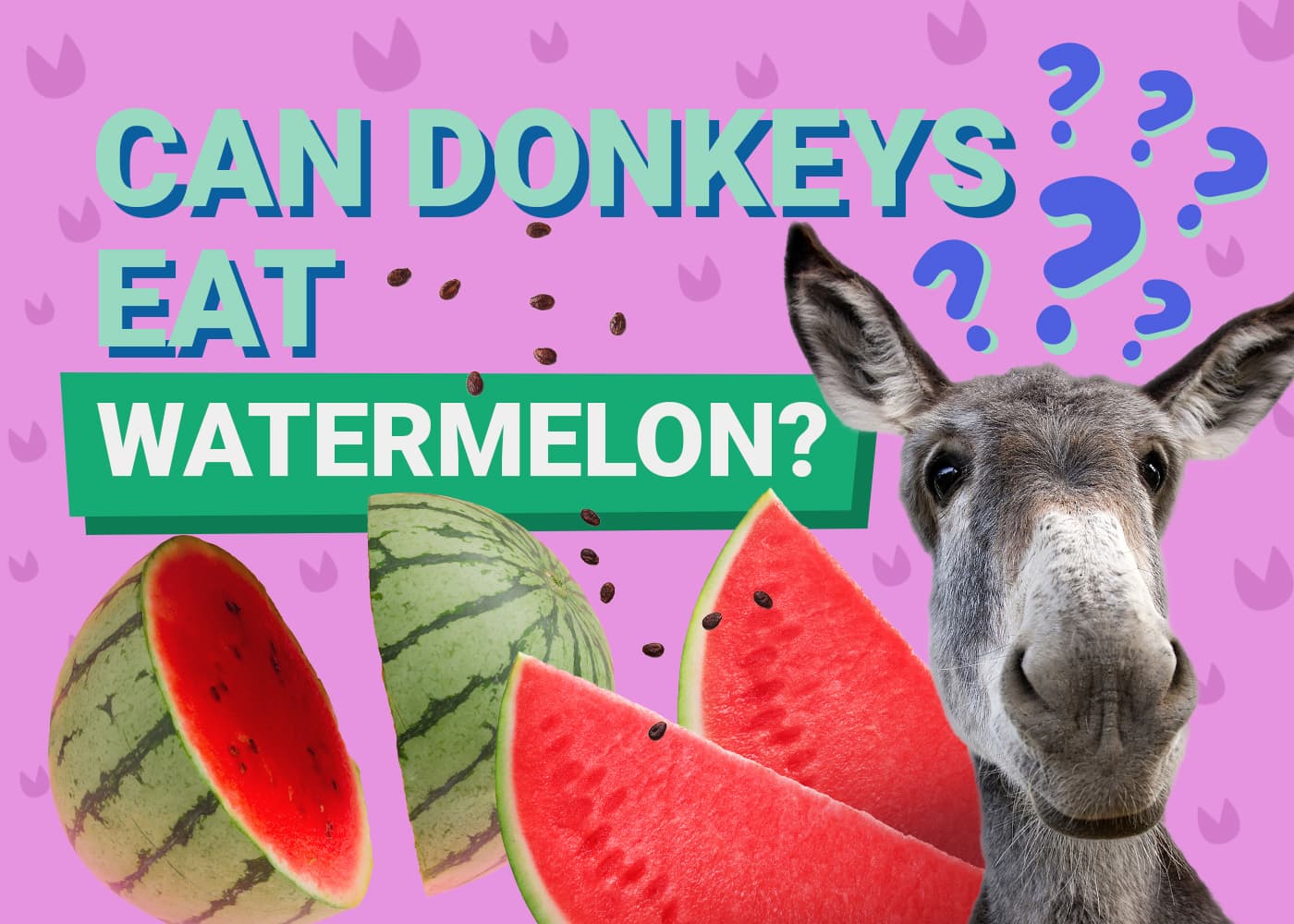VET APPROVED

The information is current and up-to-date in accordance with the latest veterinarian research.
Learn more »Click to Skip Ahead
Goldfish (Carassius auratus) live for decades with proper care. Of course, this requires proper tank cleaning and maintenance, monitoring for diseases and health changes, providing water conducive to their welfare and ensuring your goldfish has an overall enriching environment. One of the most important aspects that is frequently overlooked, though, is diet.
Goldfish require a more varied diet than you might realize, and they can eat tons of different foods. Knowing how to balance your goldfish’s diet between necessities, basics, and treats will help you ensure your goldfish will be with you for years to come. Let’s dive right into the best diet to keep your goldfish healthy.

Can’t I Just Feed My Goldfish Fish Food Flakes?
The simplest answer to this is “yes”, and you’ll almost certainly encounter someone who kept their goldfish alive on nothing but the same brand of flakes for 20 years. There are a few reasons why that isn’t ideal and won’t work for all goldfish.
In reference to fish food flakes specifically, these foods (usually, but not always) contain a lower nutrient density and more fillers than most other types of fish foods. Pellets and bars tend to often (but again, not always) have a higher nutrient density than flakes, and they are less likely to disintegrate quickly and foul the water.
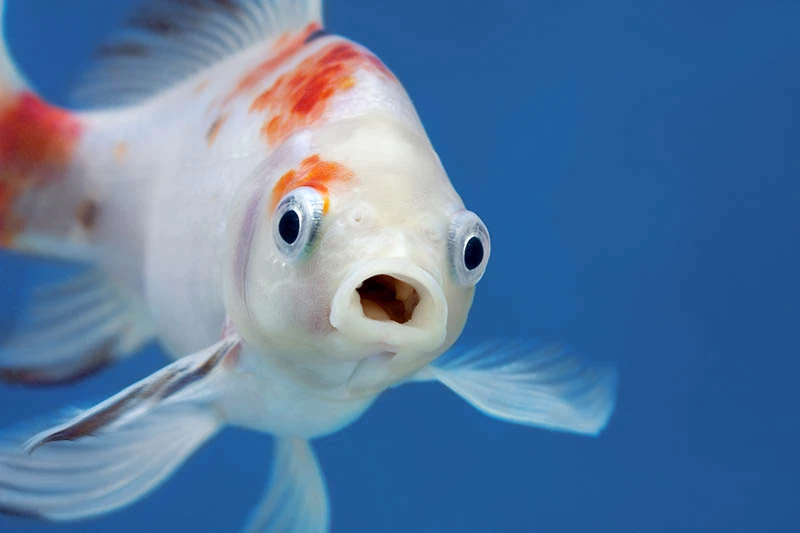
Basic Nutrition
Commercial fish foods are made with nutrition basics in mind. They are formulated to meet the needs of the goldfish for the life stage they’re intended for. For instance, a growth formulation of commercial food would have more protein than a formulation intended for an adult fish. Though these formulations may be approximated to commercial cat and dog food, there are some distinct differences to keep in mind. Specifically, goldfish are cold-blooded, which means their metabolism is influenced by their environment. As such, even the most nutritious food will not yield fantastic growth if your fish is in a less-than-ideal environment. Likewise, even the most accurately measured food morsels may be insufficient for a goldfish housed in an environment that is too warm for them (as this would increase their metabolism!)
Research has indicated that young goldfish perform best on a diet that contains at least 40-45% protein and around 7% fat 1. Interestingly, commercial products often don’t provide optimal growth rates and feed utilization for goldfish. As such, present-day guidelines for pet goldfish do recommend dietary supplementation with other food items.
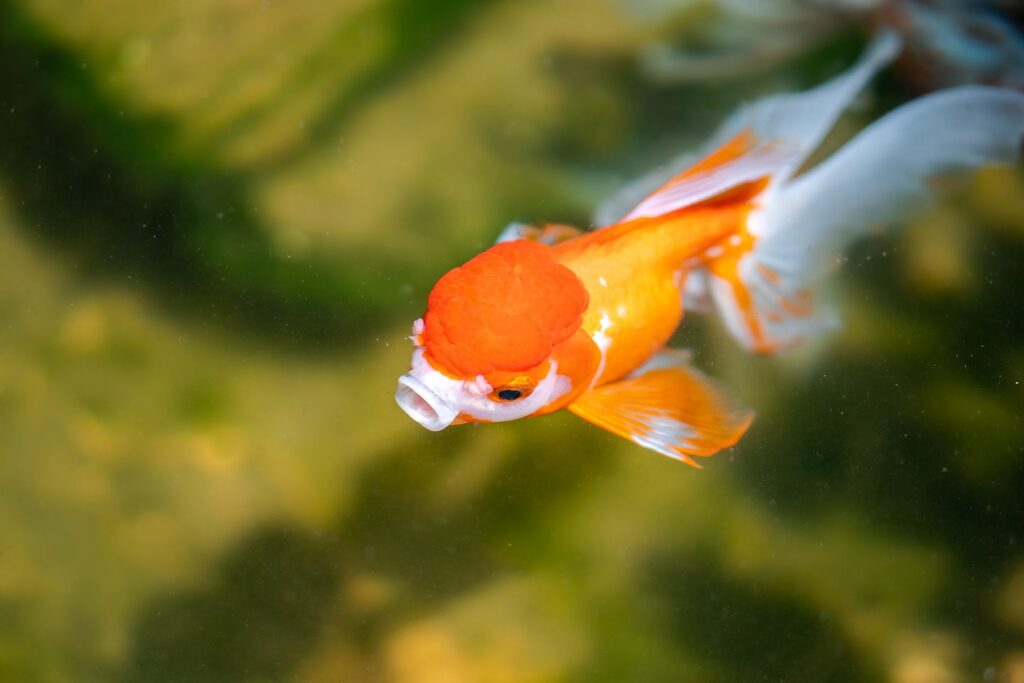
Foraging Is Important
Another factor to consider when feeding just fish food flakes, or even pellets for that matter, is that it doesn’t meet your goldfish’s natural urge to forage and snack throughout the day. In nature, goldfish eat whenever the opportunity arises. This makes sense, as food isn’t always guaranteed, and venturing out for food also makes them vulnerable to attacks from predators.
Wild goldfish (more specifically, carp) eat insects, small crustaceans, and plants. Feeding your goldfish a sprinkle of fish food once or twice a day meets the basic nutritional needs, but it doesn’t allow for the enrichment and nutrition of foraging

The Basics of a Goldfish Diet
The base of your goldfish’s diet should be commercial fish food. This will ensure that all basic nutritional needs are met. This can consist of pellets, bars, crisps, flakes, wafers, or gel food. Ideally, a rotation of different foods will help ensure variety and nutritional soundness. Aim for foods that have a protein or plant source as the first few ingredients.
- Pellets: These are available in floating, sinking, and slow-sinking Some people feel that floating foods cause swim bladder problems, especially in fancies. Sinking and slow-sinking varieties may be best for most goldfish, but you may have to use trial and error to find out what works best for your goldfish. It also is easy to make a floating pellet sink by pre-soaking it and then slowly squeezing it to release the trapped air inside (which is what allows them to float).
- Flakes: Flake foods usually float, and leftovers are more difficult to clean up than other types of foods, like pellets. And while flakes are usually less nutrient-dense than other foods, there are healthy flake varieties on the market.
- Crisps: Crisps are similar to flakes in nutrition but are easier to clean up and might be less likely to foul your water due to their more physically dense nature.
- Bars/Sticks: These are usually similar in nutrition to pellets. Bar/stick foods are usually a cost-effective option for feeding ponds and large tanks with multiple goldfish.
- Wafers: Wafer foods are rarely formulated specifically for goldfish. They are usually formulated for herbivores and bottom feeders. Goldfish will happily eat algae wafers and other wafer varieties, but they almost always need a more nutritionally sound diet that is intended specifically for goldfish.
- Gel Food: These foods are a newer variety on the commercial market, and they require you to mix up a powder base with hot water, creating a gel texture. Gel foods tend to be very nutrient dense and have a much shorter shelf life than other commercial foods.
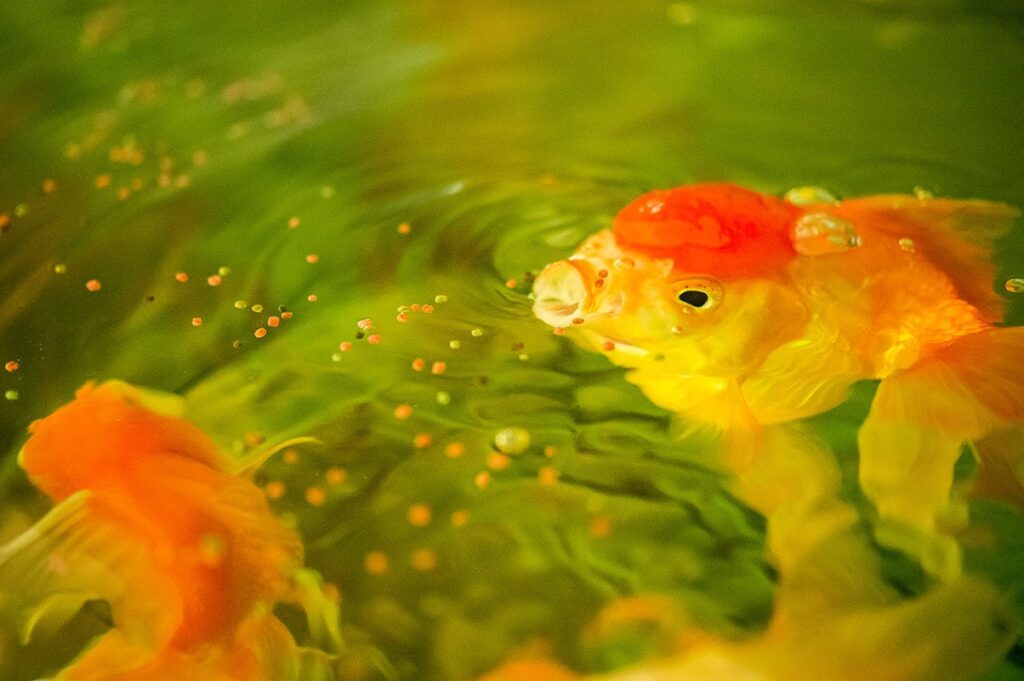
The Necessities
Goldfish should always be provided access to leafy green plants. This will keep them busy and satiated throughout the day. Goldfish aren’t picky with aquatic plants and will eat many of them, although duckweed and water lettuce seem to be favorites.
Many goldfish die as a result of improper feeding, diet, and/or portion sizes – which can be easily prevented by proper education. That's why we recommend the best-selling book, The Truth About Goldfish, which covers everything about goldfish nutrition, tank maintenance, illnesses & more! Check it out on Amazon today.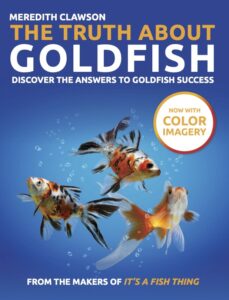
- Herbs: Basil, cilantro, and parsley are usually well-received. Your goldfish may also enjoy thyme, mint, and oregano.
- Leafy Greens: Arugula, spinach, romaine lettuce, tender spring greens, chard, kale, dandelion greens, mustard greens, turnip greens, and cabbage are all goldfish friendly.
Fruit and Veggie Treats
Fruits and veggies not listed above should be fed as treats. They can be fed as a replacement for herbs or leafy greens on an occasional basis but should not make up a main portion of your goldfish’s diet.
- Fruits: Apples, banana, melon (watermelon, cantaloupe, honeydew), skinned grapes, pears, oranges, grapefruit, berries (strawberries, raspberries, blueberries)
- Veggies: Winter squash (butternut, acorn, pumpkin), summer squash (zucchini, yellow), broccoli, cauliflower, Brussels sprouts, carrots, cucumber, skinned peas, skinned lima beans, sweet potato, green beans, asparagus, bell pepper
Do note that many fruits can quickly sludge and spoil. In addition, they are usually acidic and as such, they can alter your water’s pH in instances where you administer a large enough amount of fruits in a small enough volume of water.
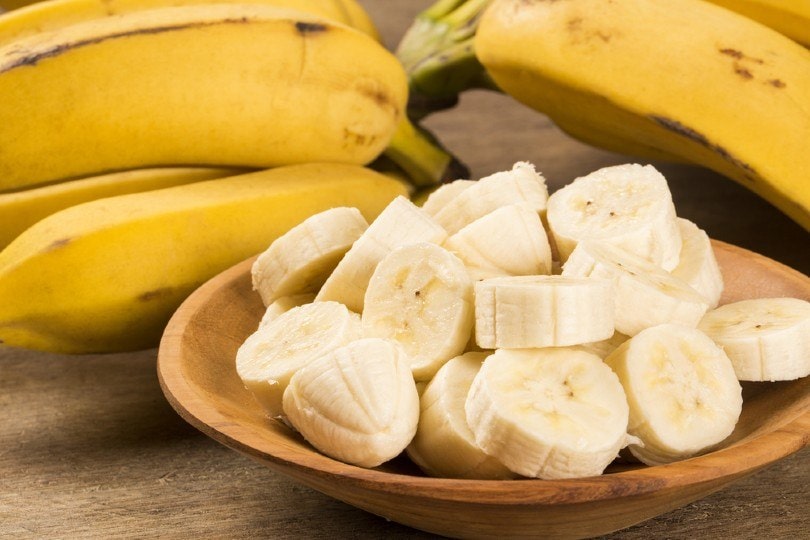
Protein Treats
These treats can mostly be found at pet stores, aquatic stores, and online vendors, although some of these are as close as your backyard. Proteins can be freeze-dried, thawed frozen, fresh, or live.
- Earthworms/Nightcrawlers:
- Red worms/Red wigglers
- Black soldier fly larvae
- Daphnia
- Brine shrimp
- Krill
- Bloodworms
- Mysis shrimp
- Cooked, unseasoned shrimp
- Mosquito larvae
You shouldn’t feed your goldfish insects you find in your garden or yard. Not only may these be sources of parasites or toxins for your fish, but displacing these animals from their natural habitat also disrupts local ecosystems.
Proceed With Caution
- Potato
- Corn
- Eggplant
- Tomato
- Bread
- Meat (cooked chicken, turkey, beef)
Foods Not to Feed
- Rosemary
- Canned fish/shellfish
- Dairy
- Lemons
- Limes
- Fried foods
- Salty foods
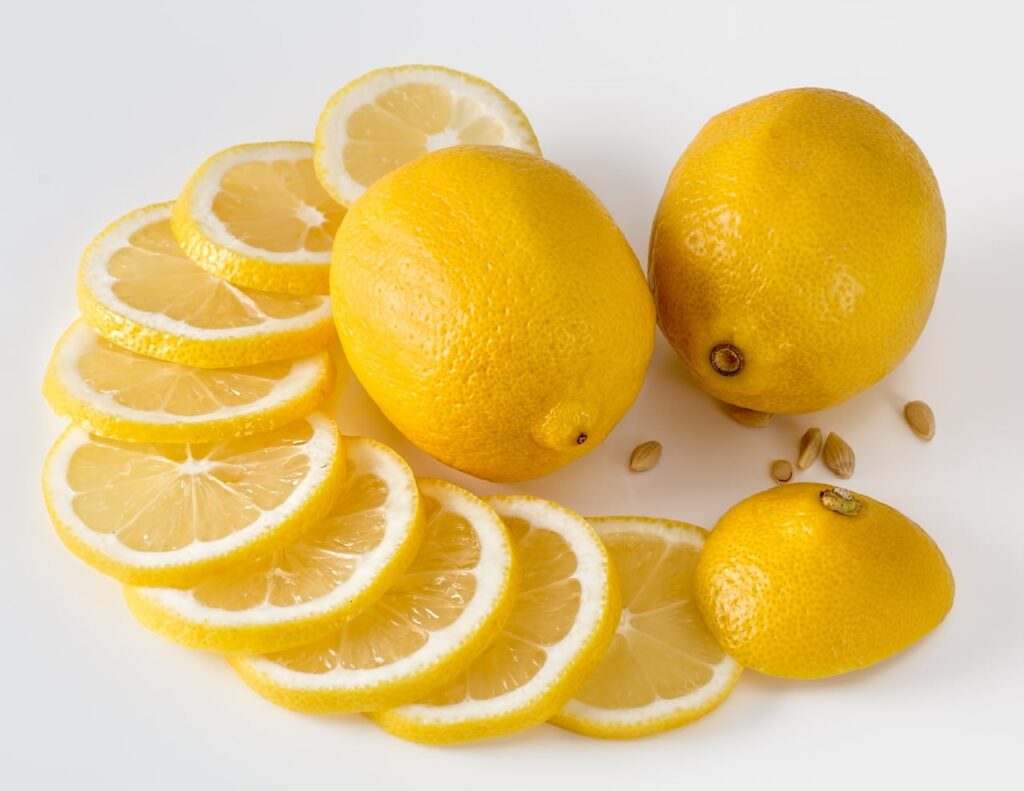
How Do I Feed Fresh Foods to My Goldfish?
When it comes to feeding fresh fruits and veggies to your goldfish, there are a few things to consider. It’s best to steam, blanch, or boil anything before feeding to your goldies. This ensures they can tear, chew, and digest the food. Foods with thin skins, like grapes and peas, should have the skin removed. Foods with thicker skins, like cucumbers and zucchini, should be peeled and seeds should be removed.
Leafy greens, bananas, and other soft foods can be offered in whole pieces since your goldfish will be able to manage the food. Harder foods or foods that may be difficult to “catch”, like carrots and peas, should be chopped into bite-size or manageable pieces. Food clips and kabob skewers are great options for offering fresh foods to your goldfish.

Conclusion
Offering novel foods to your goldfish can be fun, especially when you find something they particularly like. Keep in mind that goldfish coming from breeding environments have often been raised on commercial fish foods and have not been given access to fresh foods. It may take time for your goldfish to take to eating fresh foods, and this is totally normal. If you were raised on sugary breakfast cereal and hamburgers, then it would take you time to adjust to eating a salad. Be patient and have fun!
- Related read: Best Goldfish Treats – Reviews & Top Picks
Featured Image Credit: oatpost, Shutterstock
